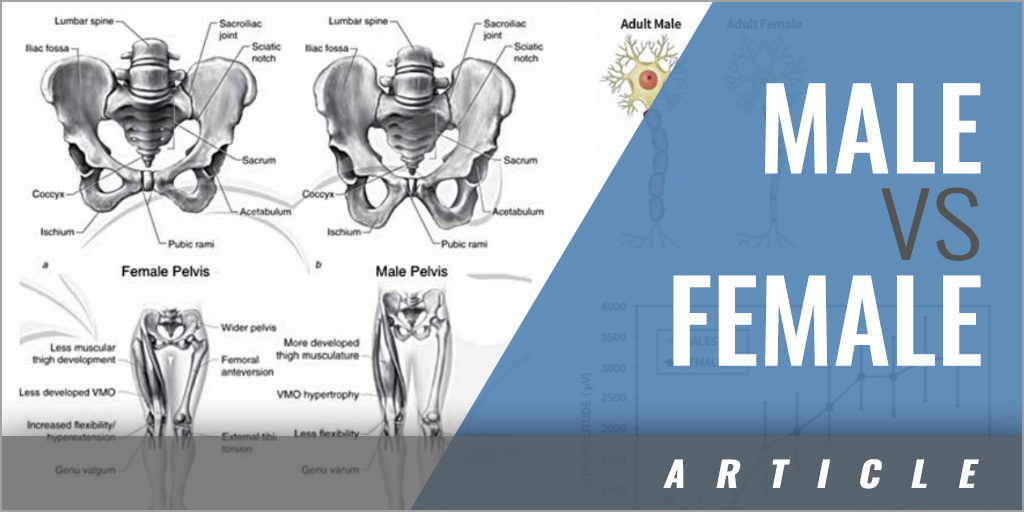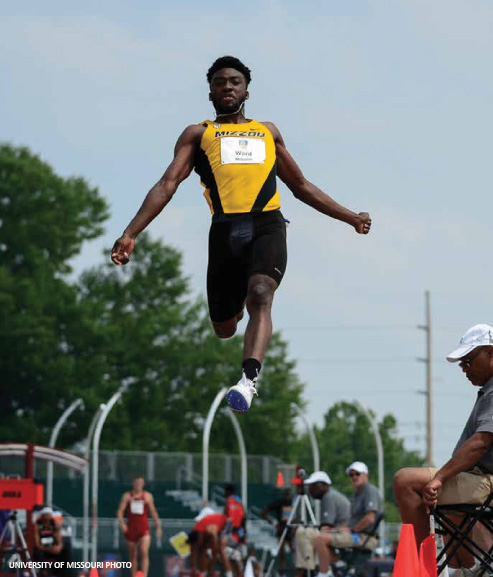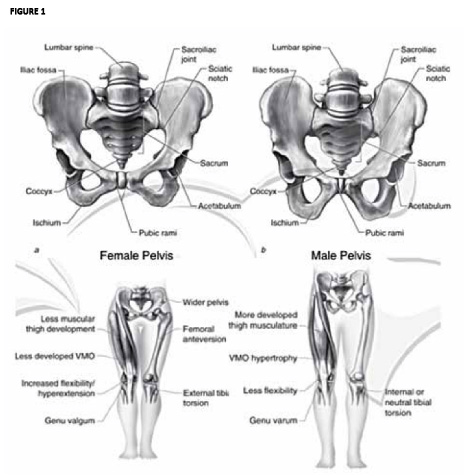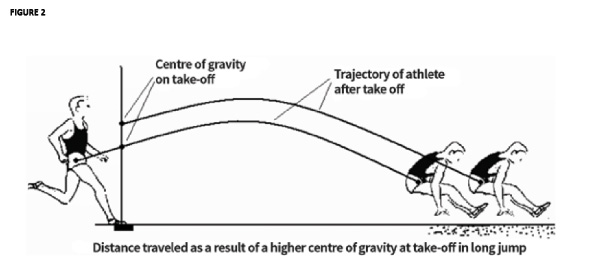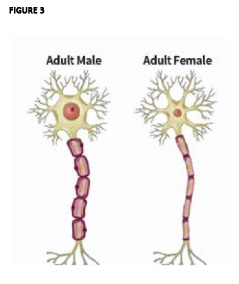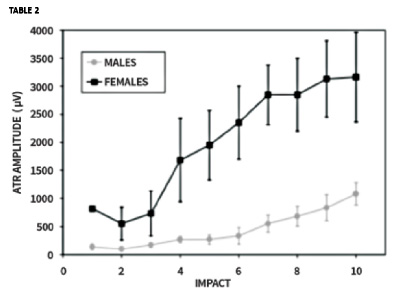|
By: Iliyan Chamov Originally Published in: Techniques Magazine Provided by: USTFCCCA
In the beginning of the twentieth century, the triple jump gained popularity in the USA, and later on in Europe and rest of the world. Until the end of nineteenth century, there had been an eclectic variety of jumping techniques. Athletes had the freedom to use the Step-Step-Jump, Hop-Hop-Jump, or the traditional Hop-Step-Jump. First Olympic Champion in Athens 1896, James Connolly from the USA, jumped 13.71m. using the Hop-Hop-Jump technique. After the creation of IAAF, in 1912 world records are accepted only with performance of Hop-Step-Jump technique. Rapid develop-ment and progression of the triple jump is observed after the creation of the modern Olympic Games in 1896. Women's triple jump was an event officially accepted by IAAF calendar in 1990 and officially accepted at the Olympic Games in 1996. The world record holder Inessa Kravets achieved 15.50m. (50'10.25") in 1995. She is also the first Olympic champion in 1996 with 15.33m (50'3.5") (Table 1). It is statistically proven that triple jump results depend on a few basic parameters such as speed, power, elastic strength and technique. Considering females and males athletes have anatomical, physiological, neurological and psychological differences, the practice plan has to be constructed differently for both genders. ANATOMICAL DIFFERENCES Anatomical differences between men and women are significantly present in bone density, bone length, tendon elasticity, and muscle mass including body fat percentage. One of the biggest differences affecting the athletic performance between male and females is the structure of the pelvis. The female pelvis is naturally wider compared to the male pelvis. The female femur has a smaller angle with the acetabulum (the hip-joint), which causes naturally, non-pathological, genu valgum positions in the knees. The described hip-joint angle causes lateral/vertical pull in the quadriceps, which with overuse through vigorous physical activities, may cause patella tendinitis (Shepard, 2000). This angle of the hip-joint also causes a less developed vastus medialis, leading to less strength in the quadriceps compared to men. Shepard (2000) indicates that women have fewer type II fibers and smaller type II/type I fiber ratios than men in vastus lateralis muscle. We can see the obvious difference in the pelvic structure and femur angle leading to smaller, weaker vastus medians and more stretch in rectus femoris respectively, leading to pull on the patella tendon (Figure 1). The width of the female pelvis and the shorter bone structure brings the center of gravity lower to the ground compared to males. The lower center of gravity provides better stability and coordination, but limits the potential of longer/higher jumps and shortens the length of the stride during running/sprinting (Figure 2). Due to the lower center of gravity of women, and a greater distribution of weight towards the hips and thighs, women normally enjoy greater range of motion in the hip-joint than men. The average range of movement and joint flexibility of women is ± 7% better than that of men. Males have biologically less body fat compared to females. Dr. Asker Jeukendrup and Dr. Michael Gleeson suggested normal ranges for body fat percentage among jumpers are 7-12% for males and 10-18% for females. Body fat percentage is a critical factor in the triple jump. It is proven that gravitational forces in the hop phase during the triple jump are 12-15 times greater than personal body weight (Pertunen et al, 2000). If an athlete has 2-3% extra body fat, that could potentially lead to more than 100lb additional gravitational load during the hop phase. Considering the gravitational forces during the hop phase, male jumpers have advantages because of the natural strength and bigger muscle fiber cross-section compared to female triple jumpers. Exposed to the same training conditions, male jumpers will develop 2% more muscle mass than female triple jumpers per week. Shepard (2000) states women have 30% less muscle mass than males. Based on that statement, less anaerobic power is present in females because of phosphagen stores per unit volume of muscle. Creatine Phosphate (CP) is stored in to the muscles, when needed supplies phosphate to ADP to produce ATP (Robergs and Roberts 1997). These advantages allow the male jumpers to use more speed on the runway and withstand higher gravitational demands while executing more desirable biomechanical positions through the triple jump phases. PHYSIOLOGICAL DIFFERENCES Before the construction of the mesocycle and training blocks, coaches had to consider the hormonal level and maximum oxygen consumption of the female athletes. Lea and Febiger (2000) suggested women recover slower than men post exercise based on their lower level of V2Omax and the amount of blood pumped through the heart. Another physiological factor that has to be taken under consideration is the menstrual cycle and hormonal changes occurring prior, during and post menstruation. In most cases, female athletes continue to compete independent of their physiological condition and menstrual phase. For that reason, adopting changes during preparation should be considered in accordance to the physical needs and the hormonal calendars of female triple jumpers (Sharhilina, 2000). A typical menstrual cycle of 28 days is divided in few phases. The first phase is 14 days, called the Follicular Phase (FP). After the FP, ovulation usually occurs on the 15th day lasting few days and this is followed by the Luteal Phase (LP) (Fischetto and Sax, 2013).
The biggest hormonal inconsistency during menstruation is observed with three different hormones which directly affect the practice and performance of female jumpers. These three hormones are estrogen, progesterone and relaxin. Oosthuyse and Bosch (2010) described progesterone and estrogen are both regulated by the Luteinizing hormone (LH) and Follicular Stimulating Hormone (FSH). These hormones are secreted by the pituitary gland. The pituitary gland is modulated by the hypothalamus, through the Gonadotropin-Releasing Hormone (GnRH), and is influenced by a number of factors including stress, exercise and metabolic status. This domino effect of hormones controlling the physiological state can be influenced by physical activities and stress. As coaches, we can control the physical loads, such as duration and intensity, and if applied properly, these can lead the body and the hormonal levels to a healthy and athletically productive physiological state. Negative effects during the menstrual cycle include abdominal pain, cramps, water retention and mood changes associated with the beginning of the LP (premenstrual week) and first day of the cycle with bleeding itself. Menstruation is linked with increased fatigue and higher incidents of physical injuries. Increased basal body temperature, heart rate, and ventilation at rest also give subjective feelings of increased exertion (Fischetto and Sax, 2013). Lebrun et al., 1995, clarified that decreased reaction time and neuromuscular coordination is also observed during the period of menstruation. It is highly recommended that practice volume and intensity should decrease during this period. The positive effects start immediately postmenstruation. Healthy menstruating woman appear stronger in the mid LP, which is attributed to increased progesterone levels compared to the late FP, with increased estrogen levels when lowest strength levels are recorded. Physically acute exercises promote increased levels of androgens in women. This happens through decreased liver blood flow during exercise. Adrenal gland synthesis increases along with increase release of prolactin (PRL) from the pituitary gland. Acute exercises also reduce the conversion to estrogen due to decreased amount of fat cells (Enea et al., 2011). The lower levels of estrogen caused by acute exercises allow the myelin sheath in females to thicken and help with increase salutatory conduction and the speed of the nerve impulse (Haier, 2005). Adaptation of training to the menstrual cycle has to be taken under careful consideration if the highest level of performance is desired. However, Fischetto and Sax (2013) indicated that females' testosterone levels peak around ovulation. It might be beneficial to plan for more intense strength training sessions and even com-petitions during that time frame. A higher level of testosterone helps for the growth of the soma and the dendrites, which causes better myelination and nerve impulse translation. Decreasing volume, intensity and technical work during the late LP into the first days of menstruation is highly recommended. Progesterone levels are high in the morning, so more benefits in weightlifting will be observed in the morning sessions followed by a second power-speed oriented session in the afternoon. Wrublevsky (2004) demonstrated the physical load, isodynamic exercises, and stress can naturally boost the testosterone levels of females. The natural peak of testosterone levels after morning weight lifting sessions will be carried in to the second training session in the afternoon. Moreover, with lifting in the morning, female athletes will achieve post activation potentiation (PAP) effect towards the second training session in the afternoon. The neurological system will fire at a high rate during the isodynamic to isokinetic training protocol during the weightlifting session and will be carried into the afternoon training session. Afterward, in long-term application changes in threshold of innervation are observed.
While coaching females, it is important to be aware of the possibility the athlete may be using oral contraceptives (OC). OC cause water retention, leading to increased body weight potentially up to 4.51b. As referenced earlier in the article, a few extra pounds can be critical for female triple jumpers considering the gravitational forces during the hop phase in the triple jump. OC can also increase the core body temperature, which can lead to negative effects in speed endurance exercises done in warm climates. Another negative effect of the OC is the increased secretion of the hormone relaxin. High levels of relaxin are associated with increased flexibility in the muscle fibers, potentially leading muscle strains. Relaxin also can have a direct effect on muscle-tendon elasticity, respectively to the Golgi tendons (Fischetto and Sax, 2013).
NEUROMUSCULAR DIFFERENCES It is visually and statistically clear females have less explosive strength than males. Compound Muscle Action Potential (CMAP) is done as an electromyography investigation. The CMAP idealizes the summation of a group of almost simultaneous action potential from several muscle fibers in the same area. Research shows that males have increased CMAP in all tested motor nerves. We have to take a deeper look into the neurological structure of females and males to determine the main reason for gender differences (Figure 3). Neurons are the main structure sending electrical impulses through the body. Willing motion originates from our brain and travels to the muscle fibers we want to activate, known as efferent path. The structure of the neuron has significant gender differences. The size of the neurons, the size of the soma and the thickness of the myelin sheath are significantly different in males and females. The size of the soma is determined mainly by the level of the testosterone and estrogen in the body. Testosterone also has an effect on the thickness of the myelin sheath. Myelin is the insulation over the core of a nerve fiber or axon that facilitates the transmission of nerve impulses. The thickness of the myelin sheath determines the speed of the electrical impulses transmitted along the nerve cells, which leads to quicker reaction and stronger signals responsible for more explosive, powerful movements. The majority of the myelin formation happens naturally during childhood. This is an important part for developing general motor patterns and motor abilities, along with improving the nerve impulses leading to greater strength. It is recommended that females start at an early age with low intensity plyometrics, such as ankle jumps, alternate bounding, and bunny hops. Progressively increasing the load and intensity of the plyometrics with age assists the myelin sheath to thicken accordingly. Strong impulses and increasing the action potential level of the nerve can happen with explosive types of exercises such as high impact plyometrics, depth jumps and dynamic exercises with additional resistance. Moreover, using dynamic exercises with resistance with female triple jumpers in the appropriate part of the macrocycle will increase the natural level of the testosterone and thickening of the myelin sheath.
Women are capable of storing elastic energy in the stretched muscle more readily than men (Aura and Komi, 1986). As we know, the stretch reflex is highly used terminology among coaches and power events specialists. The stronger the stretch reflex, the more power the athlete produces. Evidence of differences in the amplitude in stretch reflex between both genders is present. The graphic (Table 2) shows Achilles Tendon Reflex under impact in females and males. Females tend to have a higher amplitude of stretch reflex, which translates in less power production and prolonged ground contact (Nance et al., 2001). Without rapid concentric motion after the eccentric, or a prolonged eccentric phase, elastic energy is wasted and lost as heat. Therefore, the stretch reflex cannot be used (Beachle and Earle, 2008). Neuromuscular performance can be measured by static and dynamic strength. In association with the triple jump event, dynamic strength is more important for the athlete compared to static strength. Plyometric training drills should be practiced at the same or similar speed to the triple jump event (Lauder and Payton,1995).
Men demonstrate more aggressive neuromuscular growth compared to little or no change in women during puberty. Neuromuscular increase may be defined as increased power, strength, and coordination that occurs as a positive correlation with age to male athletes and shows a negative or no correlation to female athletes. For example, vertical jump develops gradually in males during puberty, but no improvements are present in females (Quatman, 2005). A study states that in girls, peak power occurs before, or in early college age. The reason is a greater musculoskeletal growth during puberty, in absence of effective neuromuscular adaptation. This is one of the main factors leading to neuromuscular imbalance in girls (Hewitt et al., 2005). During puberty, exercises with coordination characteristics for female athletes are crucial for the future development of improved triple jump technique. Most of the European and Cuban female triple jumpers start involvement with triple jump technical exercises from the age of 14. The early exposure to triple jump biomechanics is closing the gap between physical growth and neuromuscular imbalances. PSYCHOLOGICAL DIFFERENCES At the top-level of performance, there has been no proof of motivational differences based on gender. However, among the youth and junior age groups, it has been proven that motivation linked with performance indicates huge difference between both genders. Most of the females discontinue their sport activities during puberty. Men are more likely to be involved in sport, more specifically track and field, considering the nature of the direct com-petition, fast movement and the events' physical demands. Women are more prone to look on the training program as a source of social contact and a means of improving physical appearance and, in older individuals, improving health (Shepard, 2000). The biggest differences in attitudes between boys and girls are among the aesthetic sports, combat sports and racing sports. Track and field and specifically the triple jump event is unique by its demands and requirements. The triple jump event consisting of anaerobic characteristics, power, and high level of coordination without esthetic appeal is not attractive to young female athletes. For the same reasons described above, research shows only 25% of the Dutch athletic population are females. It is our responsibility as coaches to educate young female athletes in the event of triple jump without pushing them too early while consistently exposing them to appropriate jumping exercises and a competitive environment that improves their skill level. Young females involved in the triple jump event need a different psychological approach towards coach-athletes interactions compared to male triple jumpers. Women develop psychological pressure faster than men during exercises and competition. As educators, our responsibility is to provide a comfortable environment that is less stressful for the females, by controlling the intensity of our voice, body language and using positively encouraging coaching cues. Women are more dependent on personal care than men. Communicating consistently with the female athletes and showing our involvement and interest in their success assures a positive relationship between coach and athlete. Working with a group consisting of men and women triple jumpers is fine art. Approaching the men one way and females differently will bring the illusion of inconsistency and mistrust. Females have to be treated with a care-based mentality, being very motivational and assuring progress every single practice no matter the results. Miller et al., 2008 described the biggest differences between males and females attitude in sport setting are the ability to trust, frustration tolerance, facilitation of change, and feedback preference. Griksiene and Ruksenas (2011) found the most significant differences in the cognitive abilities of men and women is that men excel at visual-spatial tasks such as gauging moving objects and shape recognition, while women excel at verbal tasks such as reading, talking and listening. Hausmann et al. (2000) found a positive correlation between testosterone levels and the perception of images in males. Furthermore, (Griksiene and Ruksenas, 2011) researched discovered where higher levels of testosterone improved visual perception abilities. If we have to translate that in to triple jump training, males will respond better to video analysis, and exercises over cones and markers. Women will be more accommodating of verbal instructions, more conversations and discussion of the practice plan. DISCUSSION AND RECOMMENDATIONS Based on the anatomical, physiological, neurological and psychological differences, female triple jumpers have to be coached differently than male triple jumpers if improvement of world level results
REFERENCES Shepard, R.I. (2000). Exercise and training in women, Pt. I: Influence of gender on exercise and training responses. Can. J. Appl. Physiol. 25(1): 19-34. Aura and Komi. (1986). Effects of pre-stretch on mechanical efficiency of positive work and on elastic behavior of skeletal muscle in stretch-shortening cycle exercise. Int. J. Sports Med. 1986 Jun;7(3):137-43. Nance, P W; McHale, P L; Holmes, M J; Lee, T. Q. (2001). http:11www.ors.orgl Transactions14710712.pdf American College of Sports Medicine: Guidelines for Exercise Testing and Prescription (6th edition). Philadelphia: Lea & Febiger (2000). Miller, Thomas W; Ogilvie, Bruce C.; Branch, Janet. Consulting Psychology Journal: Practice and Research, Vol 60(3), Sep 2008, 279-285. Jeff Janssen, Janssen Sports Leadership Center htppillwww.championship-coachesnetwork.com Haier, R. J., Jung, R. E., Yeo, R. A., Head, K, & Alkire, M T. (2005). The neuroanatomy of general intelligence: sex matters. Neurolmage, 25(1), 320-327. doi:10.10161j. neuroimage.2004.11.019 Hewett TE, Ford KR, Myer GD, et al. Effect of puberty and gender on landing force and jump height. Med Sci Sports Exerc. 2005;37:S66. Hewett E, Myer GD, Ford KR. Decrease in neuromuscular control about the knee with maturation in female athletes. J Bone Joint Surg Am. 2004;86:1601-1608. Carmen E. Quatman, Kevin R. Ford, Gregory D. Myers, Timothy Hewit., 2006. m Sports Med May 2006 vol. 34 no. 5 806-813 Larisa Shakhlina, 2000. The physical work capacity of female athletes and its determining factors: New study of athletics. 15:1; 37-48, 2000. Giuseppe Fischetto; Anik Sax, 2013. The menstrual cycle and sport performance. New studies in athletics. 28:3/4; 57-69; 2013. OOSTHUYSE, T. & BOSCH, A.N. (2010). The effects of the menstrual cycle on exercise metabolism. Sports Med, 40, 207-227. LEBRUN, C.M.; MCKENZIE, D.C.; ENEA, C.; BOISSEAU, N.; FARGEASGLUCK M.A.; DIAZ, V & DUGUE, B. (2011). Circulating androgens in women. Exercise induced changes. Sport Med, 41, 1-15. Beachle, T., Earle, R. (2008). Essential of strength and conditioning: Human Kinetics. National Strength and Conditioning Association. 414-415. Lauder, M, Payton, C. (1995). Handle paddle in swimming : A specific form of resistance training. Swimming Times. 72 (12), 25-27. Robergs, R.A. & Roberts, S.O. 1997. Exercise Physiology: Exercise, Performance, and Clinical Applications. Boston: William C. Brown. The Fundamental Difference between Men and Women, Part 1: Neurons. (n.d.). Retrieved from http:Ilbuism.comlneurons. htm Griksiene and Ruksenas, 2011. |
